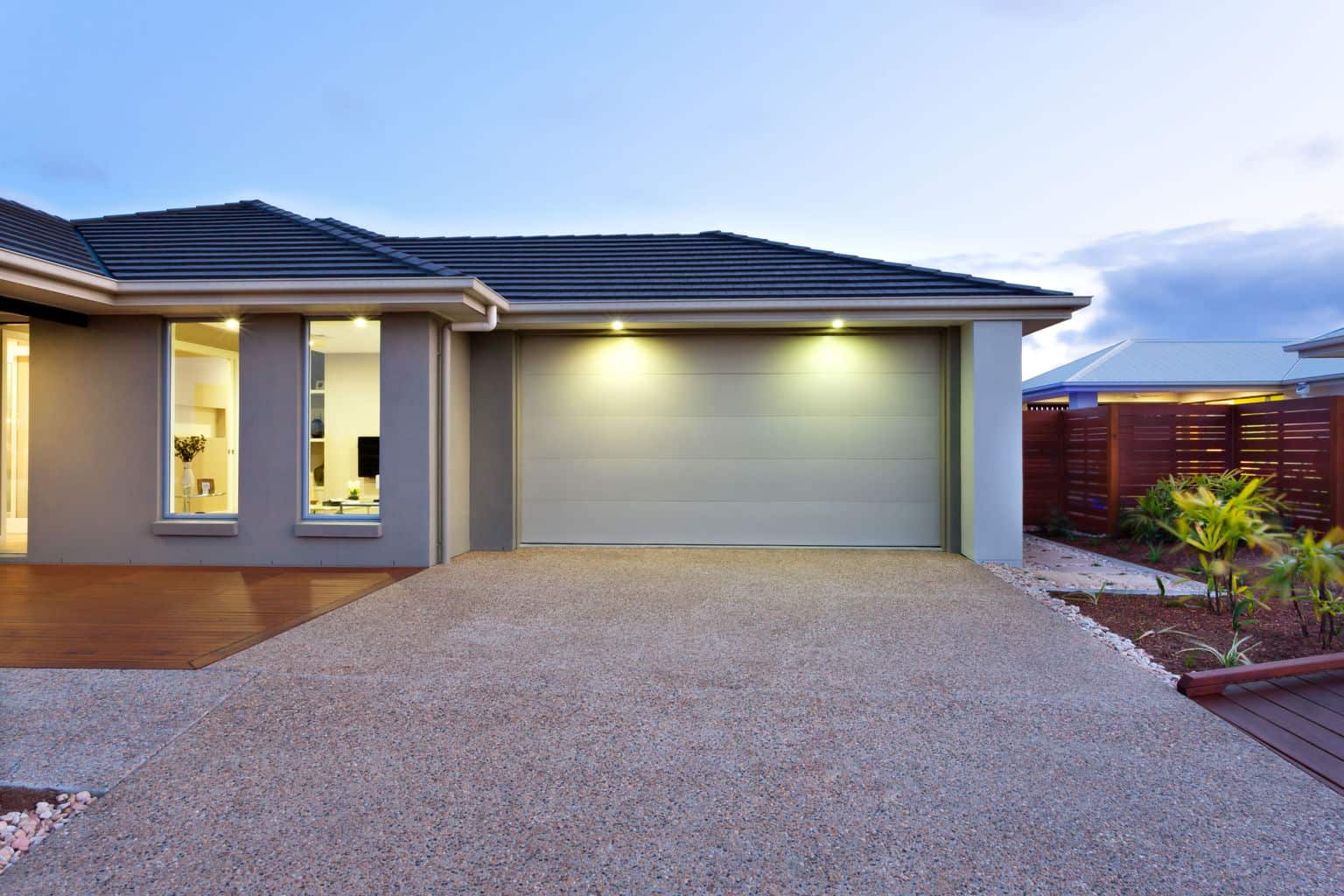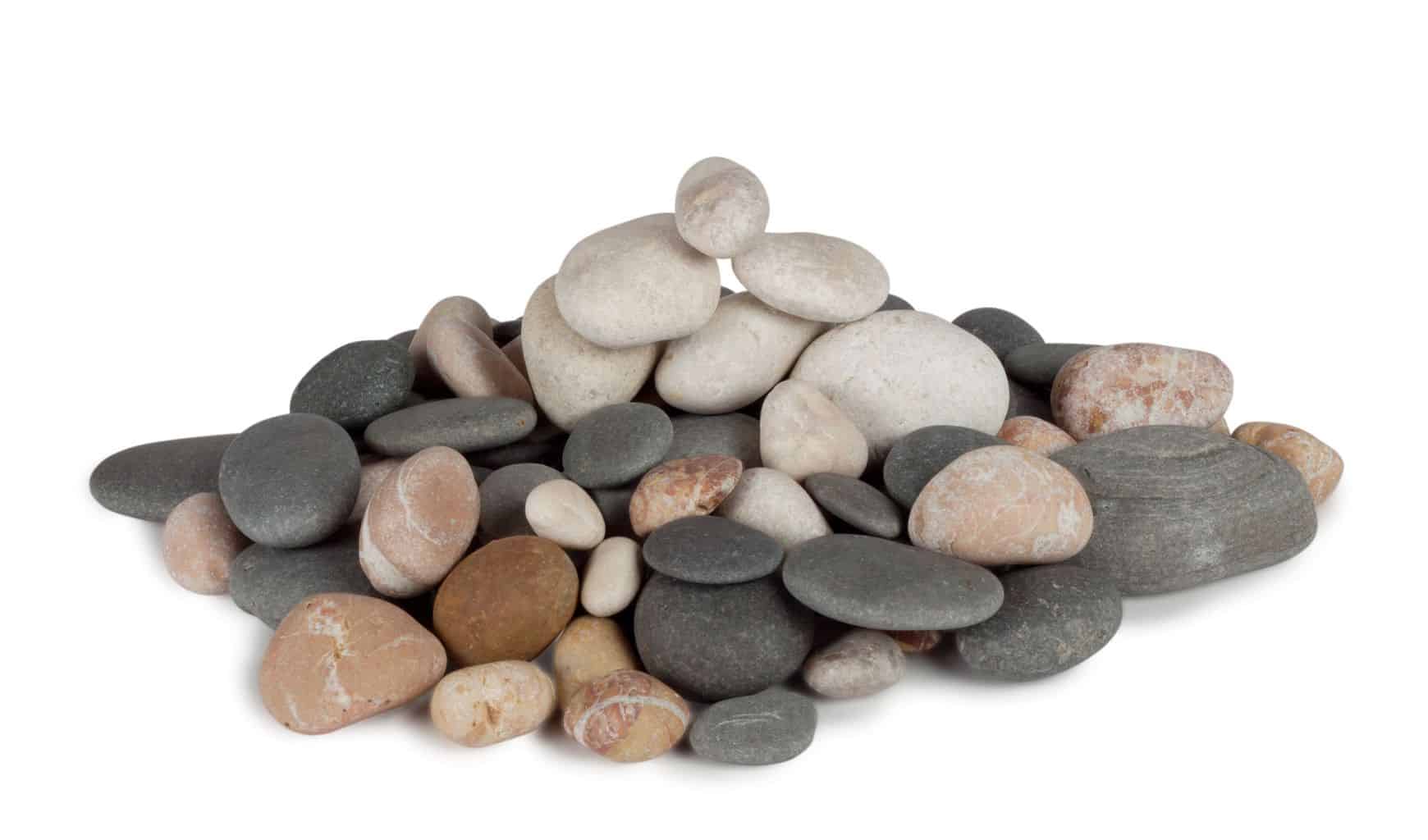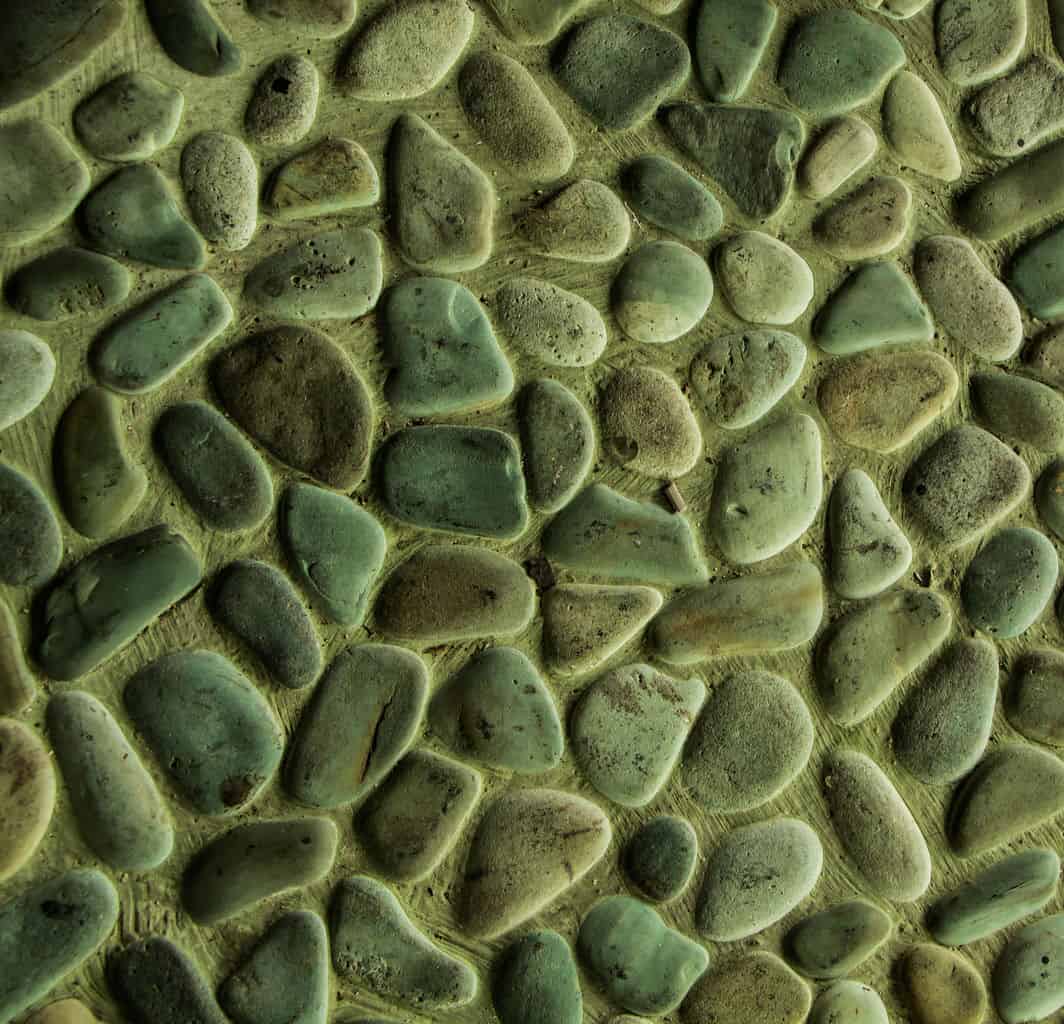Epoxy stone flooring is a good option for covering a damaged floor, for replacing an existing floor, or as a brand new floor, especially in an area that tends to be flooded. An epoxy stone floor can take on a wide range of looks, letting you create just the right look for your situation. If you are considering replacing or covering damaged flooring in a basement, a garage, on a patio, as a driveway or as a walkway, and you like the look of natural stone, you should strongly consider the epoxy stone flooring. If the look and functionality don’t convince you of the merit of this natural stone, cost will definitely convince you!

Epoxy Stone Flooring, Rising Dramatically in Popularity
For many, the use of natural epoxy stone flooring is a means for hiding flooring flaws. Recently, however, it has been gaining popularity as a flooring choice all on its own due to the simple beauty it offers. Epoxy is also known as epoxy resin flooring. Basically, small natural stones are blended with a special, water resistant epoxy. The epoxy provides the adhesion that will not only hold the stones together, but will also adhere to whatever flooring it is laid over, including concrete, and will fill any cracks or dents in the process.
There are many advantages to using this product.
- Durability
- Ease of Installation and Care
- Water Resistance
There are also disadvantages to using epoxy flooring.
- For some it can cause eye irritants,
- There is a relatively long period of time before you can start using the floor after the flooring has been done.
People have started realizing the benefits of using epoxy stone flooring for their whole building rather than using it for covering up some patches. Since it is made from resins and other chemicals, some people do not prefer it. But there are safe disposal methods available for such chemicals and therefore, such concerns should not prevent you from trying it out.

A Natural Stone Flooring at a Great Price Point
The product is installed by covering an existing floor, typically concrete. This means you are able to completely hide the underlying floor, whether that is damaged concrete or a plywood subfloor. For many, the number one benefit of using this flooring is that you do not have to remove the current flooring in order to lay the epoxy stone flooring. Consider the huge savings you will see from not having to pay to remove or spend the time your own removing the current flooring!
Additionally, installing epoxy stone flooring solves any complications that may arise from removing the flooring, and the installation process is simple, quick and inexpensive.
Being a resin, epoxy stone flooring has a very long life and hence promises you peace of mind. In addition to providing you with peace of mind, this durable flooring option will save you money in the long term, as the maintenance is practically nil.
And finally, the cost of the epoxy stone flooring itself is less than even the cost of laying concrete. The epoxy resin is very inexpensive, and the natural stones used vary in price, so your total cost will be based entirely on the stone you choose to use.
Epoxy Stone Flooring Installation Process
When you choose to use an epoxy stone floor, you will be amazed at the installation process. That is because the epoxy itself starts out as a liquid, basically just a small bucket of glue that will be mixed with the stones of your choice and then spread out and allowed to harden as flooring. If you would like to watch the installation process, check out the video below.
The Installation Steps are As Follows:
- Preparation: Preparation for installing an epoxy stone flooring is minimal, but will depend on the area where the flooring is being laid. The area on which you will be laying this flooring will need to be fully cleaned, first.
- Priming: A coat of primer will need to be added to the existing concrete floor or the plywood subfloor where the epoxy stone flooring will be laid in order to protect it. There are plenty of primer options out there available at any major retailer, like the popular brand name Kilz, that offer sealing and waterproofing, but you will want to check with the epoxy manufacturer’s recommendations. Always follow the instructions on the primer and allow for plenty of time for the primer to dry completely (can take as long as a week) before laying the epoxy, if you want the subfloor to be completely waterproofed.
- Mix the Epoxy and Stones: Now, there are several products that can be purchased here to help create the stone look. One of the common ways of doing this is through the purchase of an epoxy that has the ability to create a pebble finish. Other options include aggregate and resin floorings. The epoxy can be mixed with many other elements to create the look that you are after. There is never a dearth of options as far as design and pattern is concerned. There are UV or weatherproof epoxies that you can use if the stone flooring is to be laid outside. You will want to mix the epoxy you have chosen to use with the natural stones until the pebbles are completely coated in the epoxy. If you miss any patches, the stones will not be able to adhere to the floor.
- Apply the Epoxy Resin and Stones: After the primer coat is completely dry, the epoxy can be applied to the subfloor. Pour the resin in batches and spread the stones evenly across the floor. You will want to use a trowel, like this one, to ensure there are no uneven patches, holes that will need to be patched, or places where stones are sticking up. This is an easy process, but can be time consuming and you will want to pay attention to your work so that the final product is something you will be happy with.
- Allow the Flooring to Dry: Once the flooring material is applied, it will take twelve hours to set if indoors and a full 24 hours if outdoors. During that time the area cannot be used at all.
- Finish and Seal the Epoxy Stone Flooring: Sweep or blow off any extra or loose pebbles, and roll a top coat of the epoxy over the flooring. Allow this topcoat to dry completely before using the flooring.

In 24 hours, you can truly begin to see the strength of the product. But, it will take a full week to gain its complete strength. You can use the area again after 12 hours’ worth of curing, however, for best results, it is highly recommended that you wait till the floor is completely set before you start using it. This causes inconvenience to people who have no alternative but to use the floor for daily use, but allowing the floor 1-2 full days to dry (especially in areas where there is a higher amount of moisture in the air), you will get more use from the flooring in the long run.
The Advantages of an Epoxy Stone Floor
There are numerous advantages of epoxy stone floor. First, as you can see, the installation of this type of flooring is quite simple. Secondly, the long-term care of an epoxy stone floor is just as simple. In fact, there are fewer restrictions on the products and methods that you use with epoxy than any other type of stone flooring. On top of that, an epoxy stone floor is one of the strongest flooring solutions out there. It is commonly used in industrial settings where chemicals, fires and other accidents can happen, because it will withstand the damage. Also, it will also provide for fire resistance. Once the epoxy is set, you can start using the floor straightaway.

There is no regular maintenance, refinishing or polishing!
Additionally, as the epoxy begins as a liquid that spreads out across the subflooring and then hardens, it is not porous and moisture does not penetrate it. As a result, there is very little chance of staining and there is no risk of water damage. In the first products to come out and to be used in the 1950s, a yellowish, amber staining happened over the course of time and sun exposure. This was due in part to the fact that this early product was not UV protected. Many epoxy products today are formulated to handle UV rays, however, and if you are installing the epoxy stone flooring somewhere that will receive sun exposure, you should ensure that the product you purchase is UV protected.
If any damage does occur, such as chipping or stones breaking loose, you can purchase a simple epoxy repair kit, such as this one on Amazon, to repair the damaged places.

The Negatives of Epoxy Stone Flooring
Epoxy stone flooring does have a longer installation process due to the time required for the floors to cure. During this time, it is really recommended that the floor is not used at all. This can be a negative for some people, especially if it is a major inconvenience to avoid the flooring in the area where you are applying the natural stone epoxy flooring for several days.
Additionally, the chemicals used in the epoxy do bother some individuals. However, if the area is well ventilated during installation, the long-term use of an epoxy flooring should not cause any issues. This product does not break down for a very long time, so chemicals being released should not be an issue, as that process is incredibly slow. However, the fact that the resin does not break down over time does mean the environmental impact of an epoxy flooring is a negative that should be considered.
A Natural Stone Epoxy Flooring: Cost Effective, Attractive and Practical
Overall, the benefits of epoxy stone flooring are numerous, and it’s understandable that this type of flooring is such a popular choice. You often see epoxy stone floors in industrial settings due to its strength and long-term durability. A natural stone epoxy flooring will look amazing in any home’s patio, garage, basement, or outdoor area, and the price is hard to beat. And, as the selection of the type of natural stones that can be used in such a flooring vary significantly, your flooring will have a visually appealing uniqueness original to your floor alone.

Hi Laurie,
NeoGard seems to have some products that fit your needs. I’m sure there’s others out there as well. It sounds like you would like something in their NeoQuartz line or maybe even their NeoMarble.
Hi Laurie,
It sounds like Everlast Floor is just what you’re looking for. It is very decorative because it’s made from natural marble chips and clear epoxy resin. It has a non-pourous, easy to clean finish. It is easy to install and can be done by most local flooring installers so long as they have experiance with troweling. You can find it at http://www.everlastepoxy.com/
Yes I agree with David, Me and my wife ordered some epoxy flooring from Everlast. We had a friend of ours who is a tile setter install it. It is very unique and quite beautiful looking. We asked to have a smooth finish and the send a top coating that made it very smooth. I hope this helps.
I live in a loft space that was once an office building from the 1950’s. The floors are the type of floor tiles one usually sees in hospitals,usually green or beige. When the space was converted to residential, the developer simply installed carpet over these floors. About 10 years ago I took up the carpet and painted the floors black ( porch paint). The look is great, and very dramatic. It is now time for another coat of black, however this time I would like to apply a top coat of clear epoxy over the black porch paint. Do you forsee any problems with this?
We live in a raised ranch house and have concrete walls flanking our driveway – they act as retaining walls for the front yard. The previous owners painted them gray. I was wondering if a product like EverStone, or some type of epoxy stone could be used to cover the walls giving them a nicer appearance. The wall increase in height starting at 2 feet and going up to about 6 feet as you get closer to the house.
Yes, you could use some type of epoxy stone to cover it. Just make sure you prep the retaining walls properly first. ;~)
I am considering having my basement floor (concrete) resurfaced by Everstone using a resin and stone flooring. Are there any known long term hazards associated with the use of such floorings for indoors. It seems most of the hazards I have seen are associated with the workers who might come in direct contact with the wet resins.I am concerned because of the practices in the 1970s of spraying an insulated into walls of older homes. Later it was discovered that the insualation gave off carcinogenic vapors. Thank you.
Hi Ted,
I would suggest finding out what products they use and as to see the MSDS sheets – or try finding them yourself on the internet – shouldn’t be that difficult. Is this what you are talking about? http://everstonefloors.com/company.html
If so, there are no links to their MSDS sheets, you’d have to call or email them – unless the installer has this info already. Good luck!
Two years ago I had a stone carpet surface put on top of our patio. The concrete patio was stained and rough. The installer put down about a 3/4 inch layer of small quartz aggregate coated with resin. The resulting surface was very attractive with a slightly shiny surface. It remained porous and water did not stand on the surface but sank down and drained sideways into the grass.
The surface is still sound, but ultra violet light and time have removed the attractive glaze sparkle to the surface. I have been told one can take a thin resin and roller the surface to return the appearance. But I do not want to destroy the porous nature of the surface by filling the pores.
Can you direct me to a product that I can apply myself and instructions? I am told the entire process should take no more than 1 hour to apply, but the only contact I have found wants $500 to do the job, which I think is excessive.
Bob Meroney
Hi Bob,
As far as I know, there isn’t anything that can be applied to bring back the shine aside from applying a clear coat of whatever was mixed in with the pebbles. You can find this and do it yourself – the material is not cheap, but hopefully cheaper than the quote that you received. I would suggest doing a google search. I know you mentioned that you don’t want to destroy the appearance by filling in the holes, but I would think that there will be no help for that. You could try renting a buffer, but there’s no guarantee that that would work either.
From looking at http://www.pebblerockflooring.com/ – they have a sealer for this. Jeez, I know I just saw a place yesterday that sells it so you can do it yourself. I found it doing a google search, I’ll bet you can find a source too.
hi id like to do that pebble rock type flooring with epoxy do you know what site i can get the product and do it myself? thank you lyn
Hi Lyn,
There’s the site mentioned above your post and there are others. Go to Google and search for epoxy pebble flooring products or use the word resin instead of epoxy. You’ll find lots of leads.
I sell and install epoxy stone in the central Kansas area.
My product is suitable for interior or exterior and is freeze thaw resistant.
If you have any questions send me an email, I’d be glad to help you out.
Mark Brandt
[email protected]
I need to replace a cracking pool deck at a cost of about $10K (tear out and re-pour concrete). Would this Everstone be a good alternative for outdoor, in the sun, and winter conditions in Colorado? Or should I replace the deck?
Everstone is very resistant to ice and freezing conditions and is not damaged by salt, calcium chloride or magnesium chloride.
It can also be repaired much easier than concrete. I think it would be smart to get an estimate on the Everstone.
We have a large patio which is covered in Everstone, It is losing stone and it is discoloring. Can a new porch topping be put on over this? What approximately would be the cost of a 30fft by 30ft patio? Plase reply promptly. Thank you.
Lois Laedlein
[email protected]
Hi Lois, Your Everstone can be repaired but I don’t know about covering it with another type of porch flooring. I can’t give you an estimate on the cost; you will need to check with a local flooring specialist about that.
Epoxy stone can be repaired and should be cleaned and resealed every 2-4 years. Timing of reseal depends upon your weather conditions, and how much traffic it is exposed to. The resealing process is and easy one and most home owners are very capable of completing the job. If you have any questions feel free to contact me directly. [email protected]
I found a site that installs the epoxy stone, but I’m not sure if they sell it. http://www.pebblestonecoatings.com
Mark,
Thank you for sharing with the readers here.